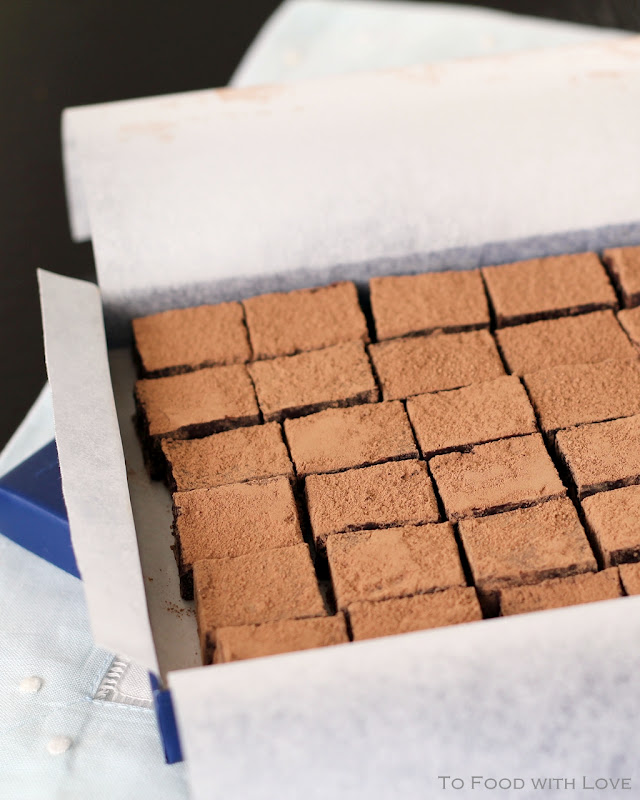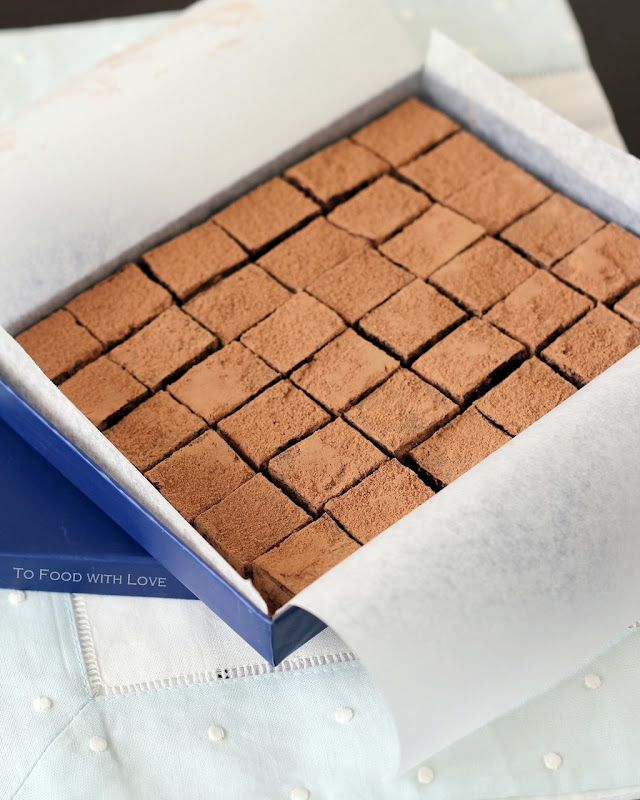I am pleased (and utterly thrilled!) to announce that I am doing a
guest post for
Rasa Malaysia today. Ever since I got that email from
Bee a couple of weeks ago, I have been looking forward to this, plus I have also been feeding my family with
loads of
wonton noodles over the last two weekends. Thankfully (for all of us), my second attempt at perfecting the recipe was a success and I was really happy with how it turned out. I have to say my favourite part of the dish is the
pickled green chillies because that's how I remember enjoying these noodles back in Malaysia. If you prefer to omit these chillies, try mixing the noodles through with Sriracha chilli sauce instead. Sriracha has a tangy zing and bite that lifts the flavours of the noodles and gives a subtle kick of heat to the dish. Do check out my
Wonton Noodles guest post at
Rasa Malaysia!
Wonton Noodles are known in Chinese dialect as "
Wantan Mee", as the locals would call it. I'm guessing that most of you would be more familiar with the version you get at Hong Kong-style eateries where the noodles don't look as dark (in all fairness) as the one you see here. This version of " Wantan mee with black sauce" is typically found in KL and the northern part of West Malaysia. My favourite has to be the one from
Pun Chun Noodle House in Bidor and there's just something about it (other than MSG) that makes it taste so insanely good. It's been years since I last had a meal there, and when I think of Wantan Mee, the Bidor version comes to mind immediately.
In Malaysia, the basic Wonton Noodles are usually egg noodles tossed in a sauce, topped with Char Siu (Bbq pork), wontons, choy sum and pickled green chillies. I should emphasize that the pickled green chillies are as essential to this dish as are the rest of the ingredients to achieve that authentic balance, and they are really easy to prepare too. In fact, if you just use store-bought Char Siu (or even wontons too), making this dish is really easy. Just make sure that you get good quality fresh egg noodles (not too thin) and your favourite brand of ready-made wonton skins.
Wonton Noodles (Wantan Mee)(Serves 4)
Ingredients:400g (14 oz) fresh wonton noodles (egg noodles)
1/2 bunch choy sum, washed and cut into 2 inch lengths
Vegetable oil
Toppings, to serve:Approx 300g (10 oz) char siu pork, thinly sliced into bite-sized pieces
16-20 wontons (use
pre-made frozen wontons, or see below for Wonton recipe)*
Pickled green chillies (see below for recipe)**
Ground white pepper
Sriracha chilli sauce, to serve (
Recommended!)
A. Seasoning Sauce (per serving of noodles), mixed well:1 tbsp thick dark soy sauce (Cheong Chan brand thick caramel)
1/2 tbsp soy sauce
1 tsp sesame oil
1/8 tsp salt (or to taste)
1/2 tsp sugar
Dash of Golden Mountain sauce
(optional)B. Mushroom Sauce:5-6 Chinese dried black mushrooms, stems removed
1 cup warm water
2 cloves garlic, lightly crushed with the back of a knife
1 1/2 cups water
1 tsp chicken stock powder
1 1/2 tbsp oyster sauce
2 tsp soy sauce
1 tsp mushroom flavoured soy (optional)
Salt and pepper, to taste
1 tsp cornstarch dissolved in 2 tbsp water
C. Lard or Garlic oil:4 cloves garlic, finely chopped (alternatively, use diced pork lard/fat)
3 tbsp vegetable oil
Method:Prepare Mushroom Sauce (B):Soak mushrooms in 1 cup warm water until softened. Squeeze out excess water from mushrooms, set aside, and reserve the soaking liquid for later. Slice the mushrooms if desired. Heat up 1/2 tbsp vegetable oil in a small saucepan. Fry the garlic and mushrooms for 1 minute. Then add the rest of the ingredients and reserved soaking liquid, except for the cornstarch solution. Bring to a boil. Cover and simmer for 20 minutes. Add cornstarch solution and stir until the sauce boils and thickens slightly. Taste and adjust seasoning if desired. Turn off the heat, cover the saucepan and set aside.
Prepare Lard or Garlic oil (C):Heat the oil in a pan and fry the lard or garlic (whichever you prefer) over low-medium heat until it starts to turn lightly golden in colour and crisp. Transfer immediately to a heat proof bowl and set aside.
When ready to serve, follow the steps below:1. Cook vegetables:Bring a large pot of water to the boil. Add 1 tbsp vegetable oil and a pinch of salt and sugar. Blanch the choy sum stems first, followed by the leaves. Remove, drain and set aside.
2. Cook wontons:Boil water in pot and cook the wontons in batches for about 1-2 minutes until cooked. Stir occasionally to prevent sticking to the bottom of the pot. Drain and set aside. Alternatively, add them to some prepared chicken broth and garnish with spring onions.
3. Prepare noodles:In a shallow serving bowl, place 1 serve of the seasoning sauce (A) and lard/garlic oil (C).
With the same boiling water used for blanching the vegetables, bring it to a rolling boil, and cook 1 bundle (100g / 3oz) of noodles for about 30 seconds or until done to your liking. Use a large sieve to drain the noodles and run it under cold running tap water for 5 seconds, then dip the noodles in the boiling water again just to warm it up. Transfer the noodles into the serving bowl and toss them in the seasoning sauce. Add 6 tbsp of the mushroom sauce (B) and toss again. Add a dash of white pepper.
Garnish the noodles with choy sum, wontons and sliced char siu pork. Serve immediately wth pickled green chillies and a bowl of wonton soup. If you like it spicy, mix the noodles with some Sriracha chilli sauce. Enjoy!
^^^^^^^^^^^^^^^^^^^^^^^^^^^^^^^^^^^^^^^
Pickled green chillies Recipe **5-6 long green chillies, sliced thinly
Boiling water
2/3 cup Chinese white rice vinegar
1/2 tsp salt
2-3 tbsp sugar
Method:Combine vinegar, salt and sugar in a bowl and mix well to dissolve. Taste and adjust salt/sugar if desired. Place sliced chillies in another bowl and pour boiling water over them. Let it stand for 30 seconds, and then drain off the water. Pour the vinegar solution over the chillies, ensuring the chillies are completely covered. Refrigerate for at least 2 hours until chillies turn into an olive-green colour.
Wonton Recipe*1 packet square wonton wrappers (about 40 sheets)
150g (5 oz) pork mince
150g (5 oz) prawn meat
1 tbsp egg white
1 tsp grated ginger
2 tsp soy sauce
1/2 tbsp oyster sauce
1/2 tsp chicken stock powder
1 tsp sesame oil
1/4 tsp salt
1/2 tsp sugar
1/8 tsp pepper
Method:Combine all ingredients for pork mince (except wrappers) and mix well. Place a teaspoon of the mixture in the middle of each wonton wrapper, and then lightly moisten the edges of the wrapper with water. Seal the edges to form a triangle shape, then press the edges to thin out the dough. Bring the corners together and squeeze to form a "money bag". Repeat with the rest of the wrappers. Set aside on a plate until ready to cook.



















